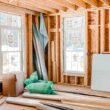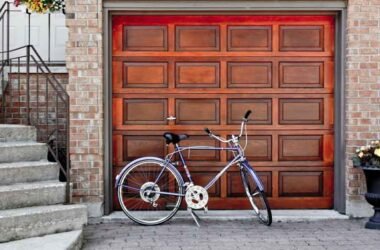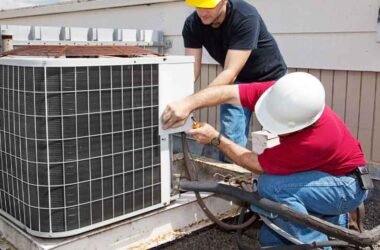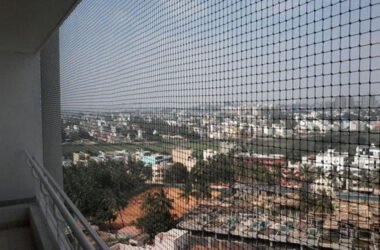If you live anywhere in Canada, you already know the weather doesn’t take it easy on homes. One week it’s relentless wind. The next it’s driving rain, harsh sun, or a winter freeze that makes everything contract and creak. Your home’s exterior takes the hit long before anything inside does. That’s why siding isn’t just “a look” — it’s your first line of defence.
What this really means is simple: when siding is correctly chosen, installed, and maintained, it protects your home from thousands of dollars in potential damage — moisture intrusion, mold, rot, insulation failure, even structural issues. And when problems do show up, handling them early matters more than most people realise. Investing in quality siding installation and repair lets your home stay durable, energy-efficient, and ready for whatever the Canadian climate throws at it.
Let’s break down what actually protects your home — and where things go wrong if siding is ignored.
Moisture: The #1 Threat Your Siding Must Block
Water is sneaky. It doesn’t need much of a gap to get inside.
Well-installed siding forms a watertight barrier that prevents moisture from soaking into sheathing, studs, and wall cavities. Too many homes show signs like:
- Bubbling paint inside
- Soft or spongy walls
- Musty smells from hidden mold
- Warped floors near exterior walls
All are signals that water breached the exterior. A properly sealed system with house wrap, flashing, and tight seams locks moisture out before the damage spiral starts.
Wind: A Test of Strength and Secure Attachment
High winds exploit weaknesses. They tug on panels. They pry where nails are loose. They lift where edges aren’t fully interlocked.
If siding was installed with shortcuts — the wrong fasteners, poor spacing, skipped starter strips — expect issues when the first big weather system rolls through:
- Rattling or loose panels
- Gaps where wind-driven rain enters
- Entire sections blowing off
Professionally handled fastening and alignment ensure your siding performs like armour instead of a loose shield.
Freeze-Thaw Cycles: The Silent Destroyer
Canada puts exteriors through constant expansion and contraction. Siding must allow movement, or it cracks under pressure.
The cycle looks like this:
- Moisture gets behind siding.
- It freezes and expands.
- It melts and repeats.
Over time, small cracks become entry points for rot. Cold-weather installation experience matters — and not every installer has it.
UV Exposure: Sun Damage You Don’t See Until It’s Too Late
Sunlight doesn’t just fade surfaces. UV rays weaken structural integrity in vinyl, wood, and even metal if coatings fail.
Early signs:
- Panels becoming brittle
- Caulking drying and shrinking
- Discolouration exposing underlayers to heat
Modern siding includes UV-resistant finishes, but they only work when properly installed and inspected over time.
Insects and Critters: Defence Against Unwanted Guests
Siding that doesn’t seal tight turns into a convenient home for:
- Carpenter ants
- Termites (especially in warmer provinces)
- Wasps and bees
- Mice and squirrels
The moment pests gain access, they create pathways water will happily follow. Good installers ensure no gaps = no unwelcome tenants.
Energy Efficiency: Better Siding Means Lower Bills
Your siding helps maintain temperature indoors by:
- Protecting insulation from moisture damage
- Reducing air leakage
- Blocking wind from penetrating wall cavities
Insulated siding options or the addition of foam board underlayment significantly improve thermal resistance. That means a home that stays cooler in summer and warmer in winter — and a noticeable drop in your energy bill.
Storm-Proofing: Your Exterior’s Emergency Gear
From hail to heavy snow, siding must take direct hits. Strong materials like fibre cement, engineered wood, and high-grade vinyl handle impacts far better than older or poorly installed siding.
This protection also stops:
- Ice dams from forcing moisture under panels
- Roof runoff from eroding exterior walls
- Rapid water accumulation during storms
When storms intensify — and they are — preparation matters more than ever.
Routine Maintenance: Small Fixes Prevent Big Repairs
Here’s the thing: even great siding needs attention. A five-minute walk-around a few times a year can save massive repair costs.
Check for:
- Cracks or chips
- Peeling caulk
- Colour changes signalling moisture
- Panels pulling away or flapping
- Rust around nails on metal siding
Addressing issues quickly keeps the protective system intact.
If you’re unsure whether damage is cosmetic or structural, a siding professional can assess and recommend the smartest next move.
What Happens When Repairs Are Ignored
A minor siding gap today can become:
- Water infiltration into framing
- Black mold inside insulation
- Compromised structural beams
- HVAC systems overworking to compensate
- Decreased property value during sale
Most homeowners don’t realise the first visible problem is usually months — or years — after the real damage started.
A Strong Defence Keeps Your Home Healthy
Siding is more than the outside of your house. It’s your safety net against weather, decay, and costly repairs. When chosen well, installed properly, and cared for consistently, siding becomes a long-term protector — not just another surface.
Investing in professionals who understand materials, climate, and proper sealing techniques pays off every season. Because the truth is, Canadian homes deserve exteriors built for Canadian weather.
Keep your siding strong, and your home stays strong with it.








